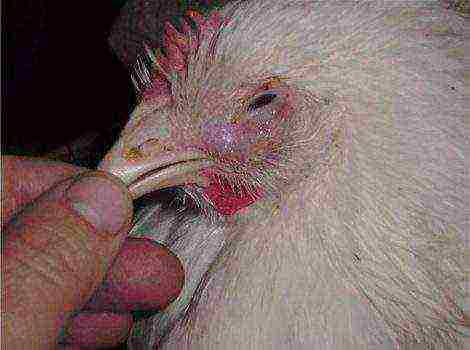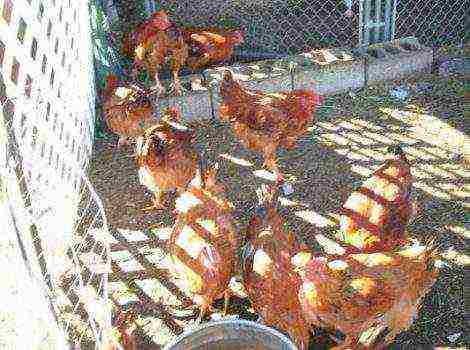Content
- 1 Growing, breeding and keeping broiler turkeys at home
- 1.1 general description
- 1.2 Conditions for keeping broiler turkeys
- 1.3 External characteristics and distinctive qualities
- 1.4 Varieties of breeds
- 1.5 How to feed turkeys and broiler turkeys at home
- 1.6 Features of breeding and cultivation
- 1.7 Poultry disease prevention
- 1.8 Pros and cons of growing
- 1.9 Farmers reviews
Growing, breeding and keeping broiler turkeys at home
Broiler turkeys are a type of poultry and are practiced by many farmers and agricultural enterprises. They are famous for their unpretentiousness, calm disposition, fertility and excellent taste characteristics of a dietary type of meat.
In this article, we will look at how to raise broiler turkeys at home, how to feed broiler chicks, and how to avoid common diseases.
general description
The body of broilers is massive, muscular, an impressive strong beak with a red appendage. Birds run fast, developed wings allow flying over three-meter fences. Develop a speed of up to 50 km / h.
Farmers consider broiler turkey breeds to be selective eaters, requiring specific housing conditions.
There are a number of nuances, recommendations that have a productive effect on the development of turkeys, maintaining the health of the whole brood. The expended effort pays off in a short time, thanks to the high growth rate of broilers.
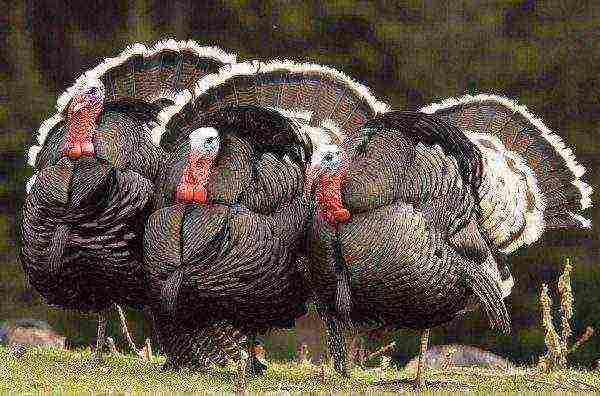
Conditions for keeping broiler turkeys
It is advisable to keep small broiler turkeys in a specially equipped poultry house.
Primary requirements:
- comfortable temperature conditions;
- dry cage;
- unlimited free access to water;
- the presence of ventilated air.
The warm season is a great time to start growing broiler turkey poults at home, providing the opportunity to walk the young in the courtyard. The cages are wide: turkeys require large spaces.
Grown up matured individuals are released into the poultry yard to gorge on kilograms. Broiler turkeys are home-bred birds. Some breeds are actively grown by large agricultural enterprises.
External characteristics and distinctive qualities
Broiler turkeys are gigantic in size. The weight of adult males is 20–30 kg. Females grow up much smaller in size: half the weight of males.
The main purpose of growing broiler turkeys is to obtain high quality meat. Egg production is an important indicator, however, not the main one. The beginning of laying, weight, number of eggs obtained depends solely on the breed of broiler turkeys.
Now let's talk about how to feed broiler turkeys at home. It is recommended to feed adults 4 times a day. Broilers always need open access to the feeder, otherwise there will be underweight. Compliance with the diet is preferable. Inconsistent selection of feeding hours leads to malnutrition. Attacks of hunger are accompanied by irritability, aggressive behavior of birds.
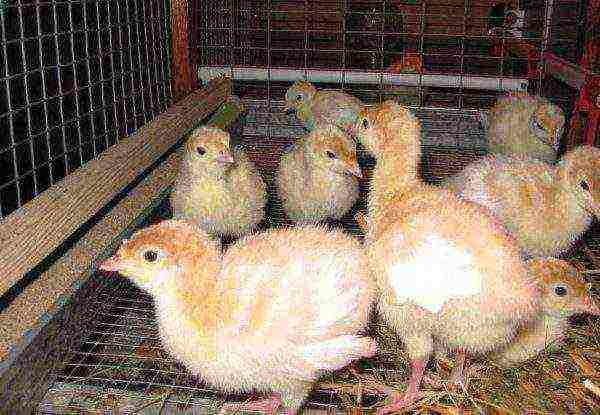
Varieties of breeds
The key to successful breeding of healthy fattened turkeys is an individual approach to the selection of methods for keeping a particular breed. There are three main types of broiler turkeys.
- Light breeds. Do not exceed 15 kg. Males weigh less than females - about 10 kg per carcass. Disease-resistant strong individuals, females have high egg production rates. These include the Norfolk, Bestville, White Dutch breed.
- Broilers are medium in size. Highly productive individuals, weighing 16 kg. This includes Moscow and North Caucasian turkeys.
- The largest breeds. The most popular type of broiler. The weight of adult males reaches 30 kg. Females grow twice as small - 12 kg. The classification includes broad-chested Canadian whites, Canadian bronzes, big 6.
You will also be interested to know about:
- How to grow Big 6 turkeys at home
- How to breed turkeys at home
Many farmers are free to choose among the crossed breeds of local turkeys. They are more hardy. Hybrid broilers rarely exceed the 10 kg weight limit.
The most highly productive and demanded among household plots are heavy breeds:
- Canadian wide-breasted broiler. The breed was bred through careful selection. Almost all types of feed are consumed. The diet should contain various baits, vitamin complexes. Weight gain is happening rapidly. A month and a half later, the chicks reach 5 kg. After another one and a half - ready for slaughter for meat. Oviposition of females begins at nine months, the number of laid eggs per year reaches 200 pieces.
Canadian broad-breasted broiler turkeys are considered the largest among other early maturing breeds. The weight of an adult male can reach 30 kg as early as three months.
- White broad-breasted. Males reach 25 kg in weight, females - 11 kg. Have an average growth rate. At the age of five months, the chick weighs 7 kg. The breed is picky about food. Females have a high level of egg production - 100 eggs per year, 90% of them will give birth to new chicks.
- Big 6 - a relatively young breed of domestic heavy crosses, was bred in 2007 in the UK. It has an impressive ratio of total body weight to the amount of clean meat. Outwardly, it resembles a white broad-chested, the level of productivity is similar to that of a Canadian. At 3 months, it reaches slaughter age. The weight can be up to 30 kg.
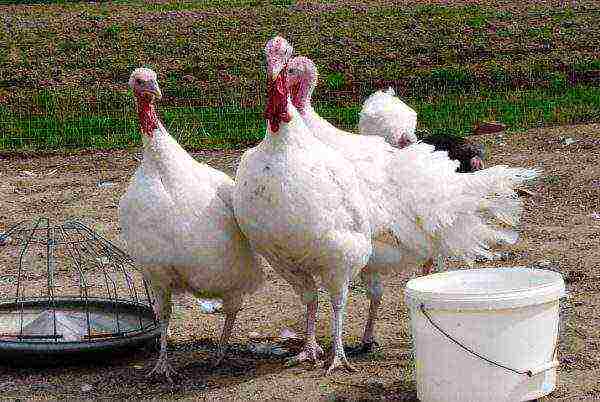
How to feed turkeys and broiler turkeys at home
Feeding broiler turkey poults at home must be a special feed, for example, zero feed. It contains all the essential nutrients. After 14 days, a smooth transition to mixtures for growing chicks begins.
After two weeks, crushed oats and wheat are gradually added to the usual feed. River sand, crushed shells, chalk will improve the functioning of the intestines. Sometimes you can pamper chicks with a mash of yogurt, boiled potatoes and bran. It is necessary to grind everything thoroughly before serving the mixture to the turkeys - large pieces of food can clog the airways, and the bird will die.
From the age of three months, the diet of broiler turkeys should consist of the following grains:
- wheat (50%);
- barley (20%);
- corn (10%);
- oats (10%);
- compound feed (10%).
It is important for adults, along with small broilers, to consume a lot of different greens - onions, nettles, carrot tops, beets, cabbage leaves. Any vegetable crops will do.
Features of breeding and cultivation
Newly hatched turkey poults are kept in a pre-warmed room. It is important to observe the temperature regime for the first 2 weeks (22-25 degrees Celsius). The health of the chicks depends on maintaining a comfortable environment. Feeders should be installed, excluding the occurrence of grouping among the chicks, otherwise weak individuals will be malnourished or they will simply be trampled.
Clean water is essential for proper broiler broiler care... Vacuum and nipple drinkers are suitable.
The house must be ventilated. The turkey poults are transferred to the street after 2 weeks. Now you know about breeding and keeping broiler turkeys at home.
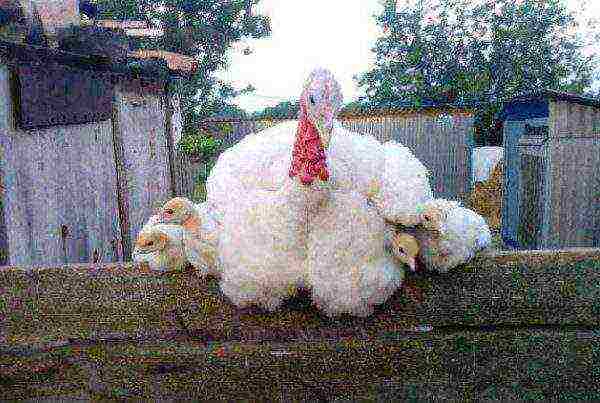
Poultry disease prevention
Broiler turkeys are birds susceptible to diseases of the gastrointestinal tract. Preventive measures:
- compulsory vaccination;
- antibiotics.
Pros and cons of growing
Growing turkeys has positive and negative aspects. You should consider them in more detail.
Pros:
- homemade turkey meat is environmentally friendly, contains a huge amount of useful vitamins and minerals, is famous for its low fat content, is dietary;
- eggs of broiler turkeys have a high nutritional value and high taste;
- breeding for the purpose of sale pays off quickly. Meat is considered rarer and more expensive;
- experienced breeders know: breeding and further sale of turkey products is practically waste-free. You can sell feathers, down, eggs, meat, chicks of any age.
Minuses:
- special conditions for keeping young animals, high risk of mortality;
- young individuals require keeping away from other poultry due to possible diseases, chicks are shy;
- are prone to obesity, for prevention, more greens should be given.
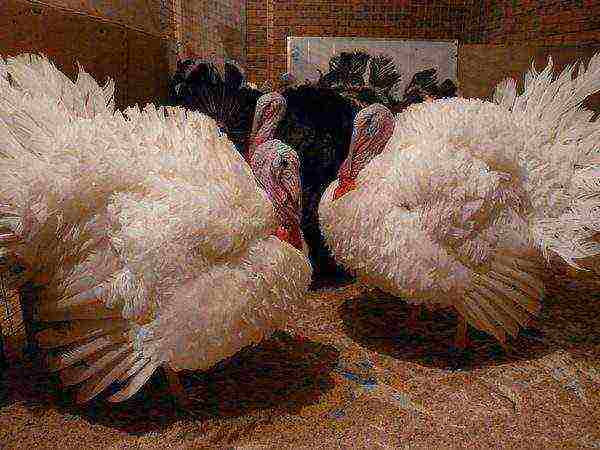
Farmers reviews
The Internet is replete with forums devoted to the topic of breeding broiler turkeys. Statistics show: the business is very profitable, the cost of feed is paid off by the sale of two turkeys out of a dozen.
Our family has been raising turkeys for over two years. For the first time, they took ten turkey poults to try, whether it will work out - not one was sick. For two months they were fed with special turkey feed "Provimi", later with broiler compound feed PK-4. Having decided to start breeding, a number of doubts immediately arose. But we did it without regretting it! A year later, 35 chicks were taken at once, only one died a day later. Bottom line: the broilers have grown huge!
You will have to bother, it is worth all the effort. The main advantage of broilers is a lot of meat! After the turkeys, the chickens looked like pigeons. I really enjoyed breeding them. One bird weighed 15-17 kg. Enough to feed the family, and it is possible to sell immediately.
Some farmers have experimented with alternating feeds for other types of poultry, such as chicken mixes. Monthly broilers grew up healthy, reaching 25 kg in weight.
Business executives practicing broiler breeding are convinced: the advisory methods of keeping do not require strict adherence, the bird is hardy and unpretentious. A brood of large healthy birds can be obtained with some effort. Years of experience of acquaintance with the peculiarities, nuances of keeping broiler turkeys convinced the breeders - it is really worth the effort.
